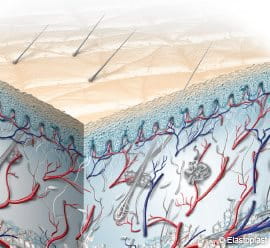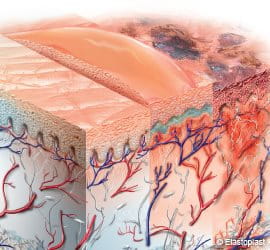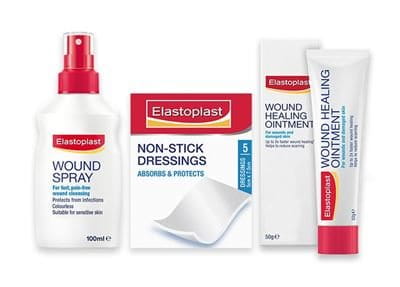About
Burns are nasty, but can happen easily while cooking, having a barbecue or when working with fire. Find out all you need to know about burns and how you can treat them effectively.
Burns from 1 to 3: Know the different degrees of burns


First degree (superficial) burns: these are the lightest degree of burns you can suffer from, and they affect only the epidermis. The burned area is red, slightly swollen, painful, dry, and without blisters. Mild sunburn is an example. Long-term tissue damage from these burns is rare.
Second degree burns: these involve the epidermis and part of the underlying dermis layer of the skin. Often scald injuries or flames cause them. The burn appears red, blistered, swollen and painful.
HOW DEEPLY IS YOUR
SKIN AFFECTED?Third degree burns: third degree burns destroy the epidermis and the dermis and may also even damage the underlying subcutaneous tissue, bones, muscles and tendons. The burn site appears white or charred. There is no sensation in the area since the nerve endings are destroyed.


